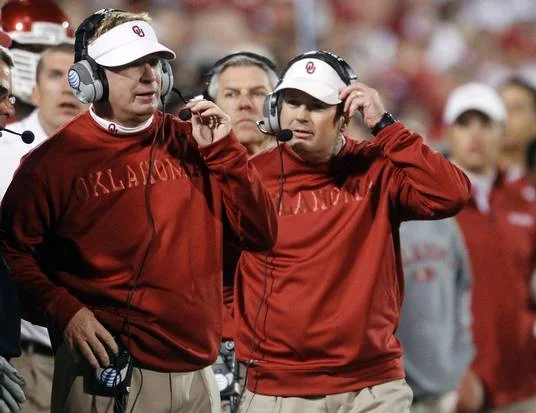Sooners strike better defensive balance
As someone who follows Oklahoma football fairly closely, one of the more tiresome perceptions that has latched onto the program in recent years is the revisionism surrounding the Mike Stoops-Brent Venables fork in the road.
For the uninitiated: At the end of the 2011 season, Bob Stoops opted to bring his brother back to the program after Mike’s ouster from Arizona. The plan was for Mike and Venables to serve as co-defensive coordinators, returning to the arrangement that produced some of the best defenses in the country in the early 2000s.
Instead, Venables took a lucrative offer to join Dabo Swinney’s staff at and Clemson. His defenses have generally rocked since joining the Tigers, and they played a big part in Clemson’s national championship run in 2016.
Meanwhile, OU’s D has hit the skids under Mike. The difference between the two coordinators’ paths was never more stark than in the meetings between OU and Clemson in 2014 and 2015. Venables’ units pounded the Sooners into submission on both occasions.
So if the defense has stunk since Venables left OU and Mike took over, it stands to reason that the switch is the reason, right?
There’s an equally valid explanation for the downturn: At the same time OU made the switch at defensive coordinator, recruiting was going haywire.
Around 2011, the Sooners’ signees began skewing heavily to offense. The chart above breaks down OU’s annual five-year recruiting totals by offense and defense beginning in 2010. (In other words, the 2010 number accounts for the classes signed that year and in the previous four years from 2006 to 2009 – I used five-year totals to cover all potential players on the team in a given year, including redshirts.)
As the chart shows, OU signed 61 defensive recruits and 59 offensive players in the five recruiting classes between 2006-2010. The noticeable shift to offense became evident in 2012, which saw five-year totals of 63 on offense and 51 on defense.
You can blame the trend on a number of factors, including mismanagement on Bob's part. Finding fault doesn't change the end result. Scholarships are a college football program’s most precious resource; OU wasn’t investing nearly enough in the defensive side of the ball.
That kind of imbalance doesn’t prove anything by itself, but common sense suggests problems are coming down the line. It means less margin for error in evaluations, outsized effects of attrition, forcing players into action before they are ready, less competition in practice for spots – just to name a few. As one example, OU had to use true freshmen Dom Alexander and Jordan Evans, two obvious project recruits, at linebacker in 2013.
The trends in OU's five-year average rankings of offensive and defensive efficiency as measured by S&P+ tell a clear story, too.
Oklahoma five-year average national rankings in offensive and defensive efficiency (2010-2016)
While the Sooners returned in recent years to playing some of the best O in the country, the D continued to languish.
Of course, if you are willing to recognize that Mike might have been the victim of circumstances in recruiting, you also have to acknowledge that grace period has come to an end.
OU's recruiting finally smoothed out with the signing of its highly regarded 2017 class. Not to mention, the Sooners landed a total of 20 blue-chip defensive recruits in the last three years.
OU still has personnel holes on D, including a paucity of reliable interior linebackers. Even so, the overall performance of the group should still show notable improvement over last season.
If not, it's hard to see Mike back in Norman in 2018.

